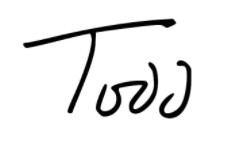
Next time you’re talking with a Vietnam veteran, ask if they’re carrying a P-38. Chances are, they have one in their pocket.
Virtually anyone who served in the Army or Marine Corps–even Air Force–between World War II and the 1980s is well familiar with the P-38 can opener, perhaps the most versatile and perfectly designed piece of equipment ever created for the military.
It came about in 1942 with the mass production of C-rations—canned food sent to feed GIs around the world.
 The cans made food transportable and kept it fresh, but opening them on the frontlines was a problem. Soldiers in the field lived with very few pieces of equipment, all of it carried on their back, over their shoulder, or on their waist. Switchblade-size openers were too big and cumbersome. They were also expensive, as were winding keys affixed to each can.
The cans made food transportable and kept it fresh, but opening them on the frontlines was a problem. Soldiers in the field lived with very few pieces of equipment, all of it carried on their back, over their shoulder, or on their waist. Switchblade-size openers were too big and cumbersome. They were also expensive, as were winding keys affixed to each can.
So, the Army’s Subsistence Research and Development Laboratory in Chicago issued a challenge to industry: design and manufacture a cheap, small, lightweight, easy-to-use device that wouldn’t cut soldiers when they put them in their pockets.
 A soldier at the lab, Major Thomas Dennehy, drew up the initial design in thirty days. But he couldn’t solve the problem of a locking mechanism that would keep the blade from opening when not in use.
A soldier at the lab, Major Thomas Dennehy, drew up the initial design in thirty days. But he couldn’t solve the problem of a locking mechanism that would keep the blade from opening when not in use.
That final design step fell to John W. Speaker, an immigrant from Austria who had watched from afar as Nazis took over his native land. He had two things making him a good fit for the challenge: a passionate hatred for Hitler and a metal shop in Milwaukee that made automobile parts. He used the latter to perfect a special hinge which kept the blade snapped shut when not in use. The former inspired him to refuse any royalties for his invention. He was a patriot and wanted to do his part to win the war.
JW Speaker Company would go on to manufacture over 50 million P-38s at the cost of about a penny-a-piece.
Speaker didn’t label the device a “P-38.” Rather, it got a typical Army designation: “Opener, Hand, Can, Folding, Type 1.”
So how did the can opener get its nickname?
 I’ve posed that question to many veterans and have gotten different answers. Some say it’s because it is 38 mm long—true, but Americans didn’t use metric then. Others say the name came from the 38 rocking motions it takes to open a C-ration-size can—also true, I tested it. Could it have been named after the Lockheed P-38 Lightning fighter plane or the German P-38 semi-automatic pistol? Possibly, but what’s the connection? The larger version, the Type II, became known as the P-51, as in the North American P-51 Mustang fighter plane, so maybe it does derive from military aviation. The mystery remains.
I’ve posed that question to many veterans and have gotten different answers. Some say it’s because it is 38 mm long—true, but Americans didn’t use metric then. Others say the name came from the 38 rocking motions it takes to open a C-ration-size can—also true, I tested it. Could it have been named after the Lockheed P-38 Lightning fighter plane or the German P-38 semi-automatic pistol? Possibly, but what’s the connection? The larger version, the Type II, became known as the P-51, as in the North American P-51 Mustang fighter plane, so maybe it does derive from military aviation. The mystery remains.

One thing is certain: from 1942 until the introduction of MREs in the 1980s, American servicemen have loved the P-38, not only for yielding the fruits of C-rations when they were hungry, but also for its unofficial uses. Soldiers used them as screwdrivers, rifle cleaners, mini-prybars, and knives for cutting fabric. The little hole at the end made putting them on dogtags easy.
I just received a well-used P-38 in the mail as a gift from retired Army Major Kathy Silvia, who graduated from the first West Point class that accepted women. I treasure it . . . and will keep it close in case I need to pry open a paint can in a cinch.



